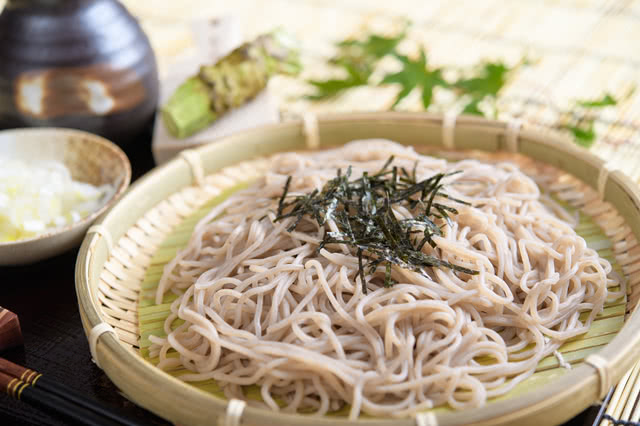
If you're looking for a quick and easy meal in Japan, have soba (buckwheat noodles), one of Japan's first "fast foods." Here are some tips on how and where to eat this noodle dish with that all Japanese are familiar.
What Is Soba?
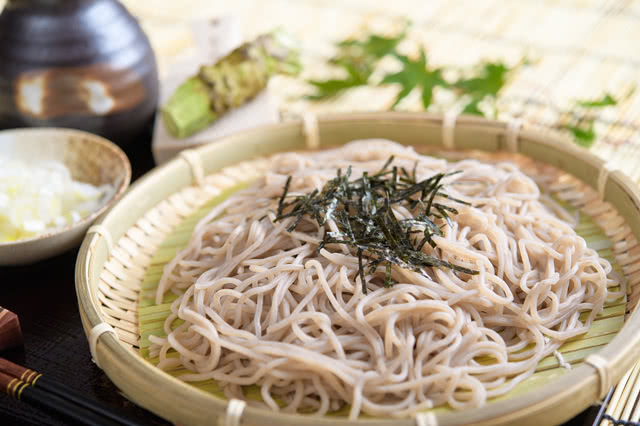
- Nagano Prefecture, the Soba Mecca
You can have soba anywhere in Japan, but Nagano Prefecture is particularly famous as the soba mecca of Japan. Since long ago, it has been flourishing thanks to buckwheat cultivation, and most areas of this prefecture have their own unique version of soba. Nagano's Togakushi soba is among Japan's top 3 soba varieties, together with Shimane Prefecture's Izumo soba and Iwate Prefecture's Wanko soba.
- Soba Tastes Different in Kanto and Kansai?!
Kanto and Kansai use different types of dashi (broth): dashi with deep color and flavor that's based off katsuobushi (dried tuna flakes) is the most common in Kanto, while in Kansai, the flavor is given by kombu (kelp), resulting in more light and clear broth. Try them both to compare them and pick your favorite!
Types of Soba
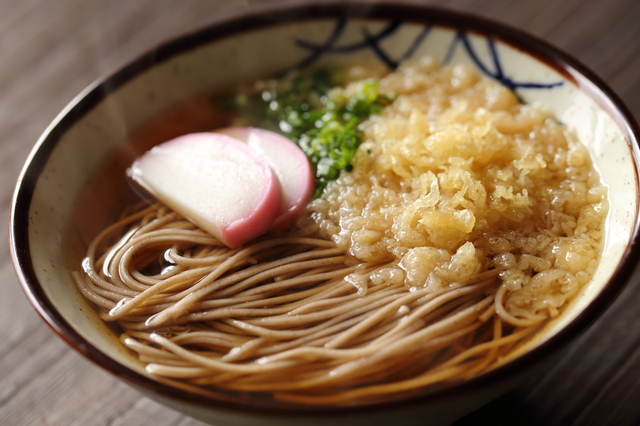
- Kake Soba
This kind of soba is simply served with just hot dashi. Sometimes you may add tenkasu (tempura bits), scallions, or other condiments.
- Zaru Soba
You eat this type of soba cold with tsuyu (dipping sauce), and the noodles are served on a zaru (bamboo basket). Most restaurants top this dish with shredded nori (seaweed). The name changes according to the ingredients and what tableware it's served in, so you will sometimes see this called "Mori soba" or "Seiro soba."
- Tanuki Soba
Usually, this dish consists of kake soba topped with tenkasu. However, you'll find different ingredients being used depending on the region: in Osaka, the word "tanuki" refers to a sweet boiled abura-age (thinly sliced and fried tofu), while in Kyoto, the noodles are topped with shredded abura-age and dressed with ankake (a thick starchy sauce).
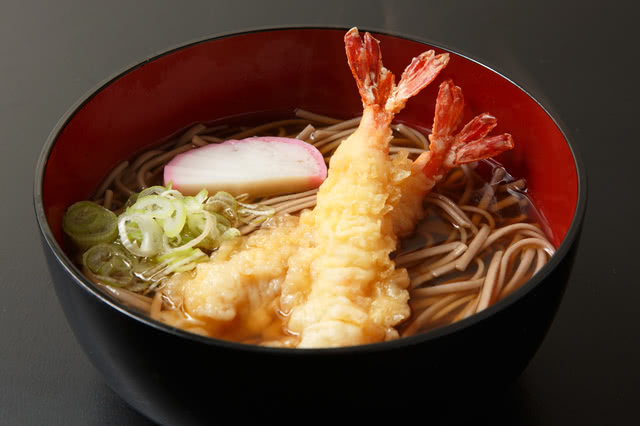
As simple as it sounds, this type of soba refers to kake soba topped with tempura. Usually, it's shrimp tempura.
- Kakiage Soba
Kake soba (simple soba with hot dashi) with kakiage (tempura fritter made by mixing batter with finely-cut seafood and vegetables) on top is called Kakiage Soba.
- Tororo Soba
Tororo is grated yam, and it's used to enrich the tsuyu you dip this variety of cold soba into. A different version consists of kake soba topped with grated yam or soaked in a tororo-based dashi (also called "Yamakake soba"). Sometimes, this soba comes topped with egg yolk or a raw quail egg.
- Okame Soba
On kake soba, you'll get kamaboko (fish paste cake), nori, greens, shiitake mushrooms, and other ingredients arranged in the shape of an okame mask (used in Kagura, a ritual dance dedicated to the Shinto deities).
- Kamo Nanban Soba
Here, kake soba is topped with scallions and duck (kamo) meat boiled in tsuyu. This dish is also called by the abbreviation "Kamonan."
How to Eat Zaru Soba
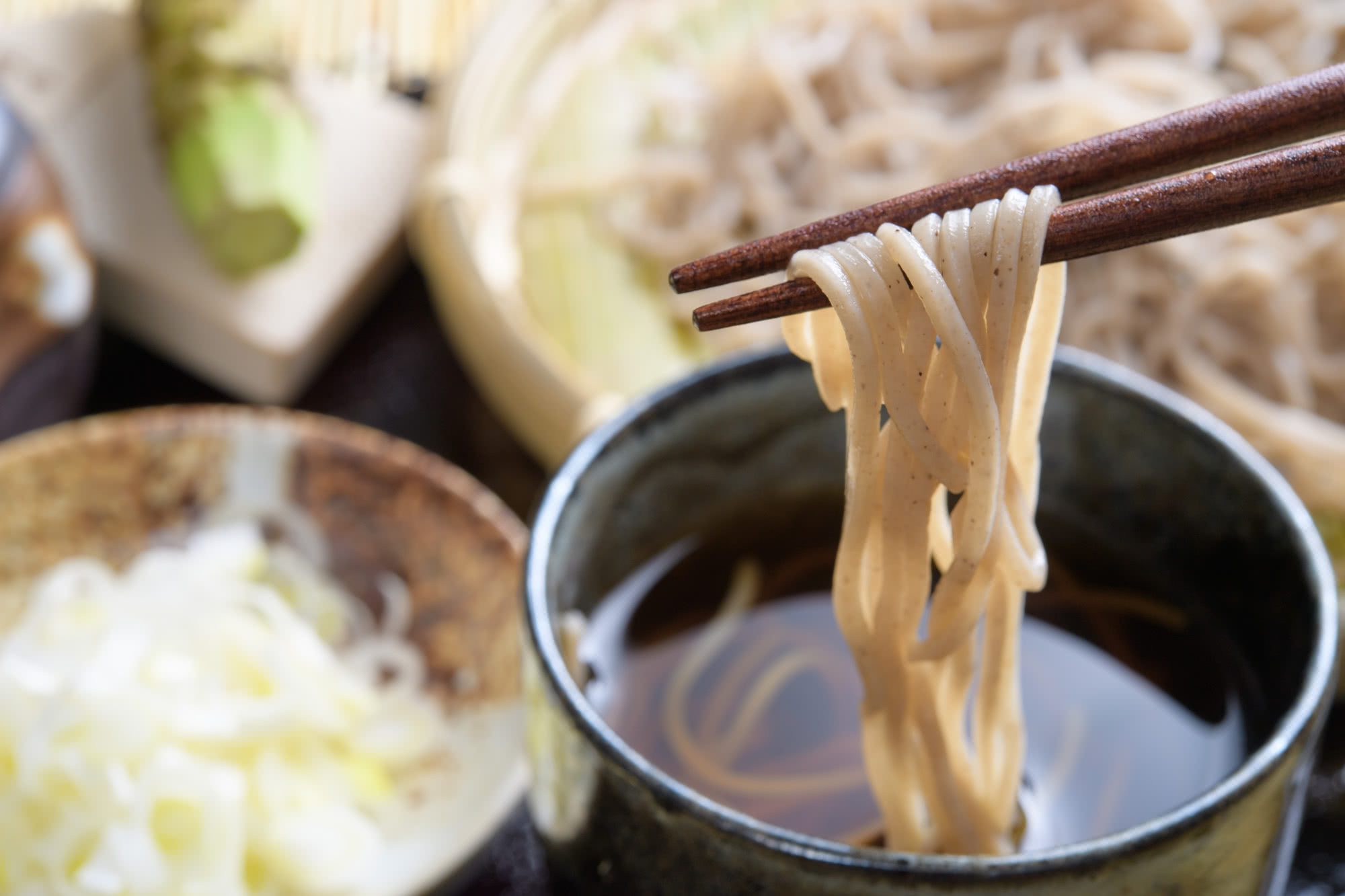
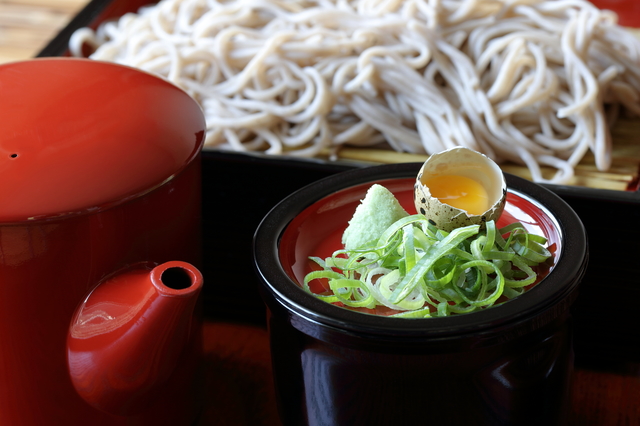
1. Don't add condiments when taking the first bite
Zaru soba usually come with condiments, but in the beginning, simply dipping the noodles in tsuyu will allow you to taste their original flavor.
2. Be careful not to use too much tsuyu!
Pick a bite-sized amount of soba with your chopsticks and dip only the lower half of the noodles in the tsuyu. When dipped in tsuyu, the noodles will stretch out and break apart in no time, so once you put them in your mouth, suck in all the noodles instead of biting them off. If you want, you can hold the cup of tsuyu under your chin while doing so.
3. Try to add condiments
Now that you've experienced the authentic flavor of soba, find out how the noodles taste with condiments like scallions or wasabi. You can add them to the tsuyu, but the ideal way to enjoy the combination of flavors is to top them on the noodles.
4. Drink the soba soup
Depending on the restaurant, when you're finished eating your noodles, you may be served "soba-yu". This is the broth that the noodles were boiled in, and it's full of precious nutrients. You may either drink it as is, or mix it with the remaining tsuyu.
- If it's served with tempura on the side...
When you order zaru soba with tempura, you can dip tempura in the tsuyu as well. Alternatively, some restaurants provide a special tsuyu for tempura or salt as extra seasoning.
Are There Rules on Eating Soba?
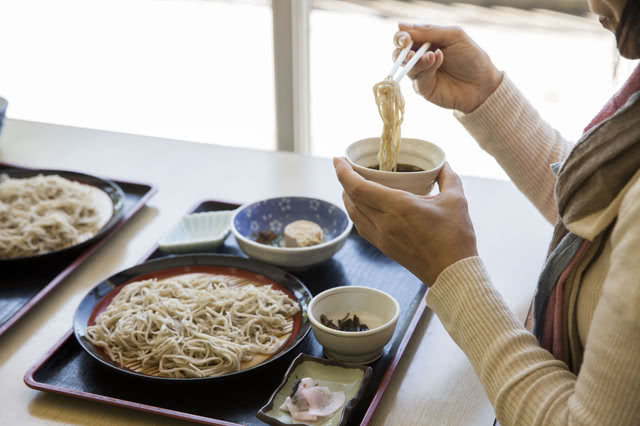
Also, they taste better if you suck them all in instead of cutting them off with your teeth. Don't worry if you make a slurpy sound - it's totally acceptable. Slurping allows the aroma of the soba to move from your throat to your nostrils, making the noodles taste even more delicious.
How to Enjoy Soba Restaurants
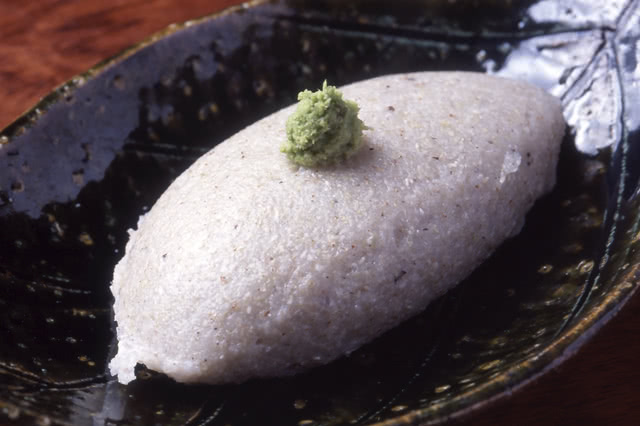
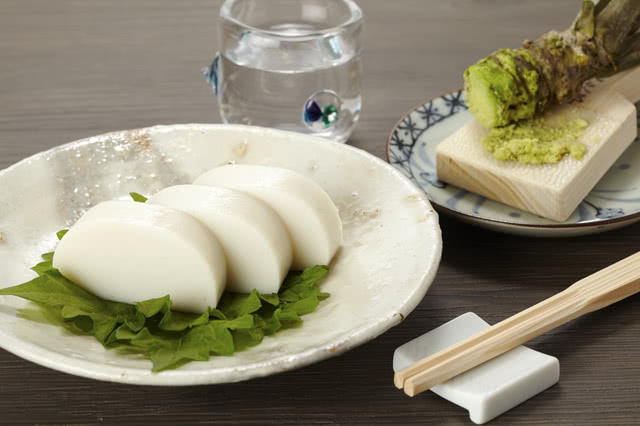
For example, sobagaki is a dough made from buckwheat flour and hot water that you eat by dipping it into soy sauce or tsuyu. It allows you to genuinely enjoy the flavor and aroma of buckwheat. Other classics are ita-wasa, which is thinly-sliced kamaboko dressed with wasabi and soy sauce; tamagoyaki (Japanese omelet) made with the same dashi or tsuyu for the soba; grilled duck, tempura, and so on.
Unmissable Soba Spots You Have to Try at Least Once
1. The 150-Year-Old Soba Restaurant "Edo Soba Teuchidokoro Asada" (Asakusabashi)
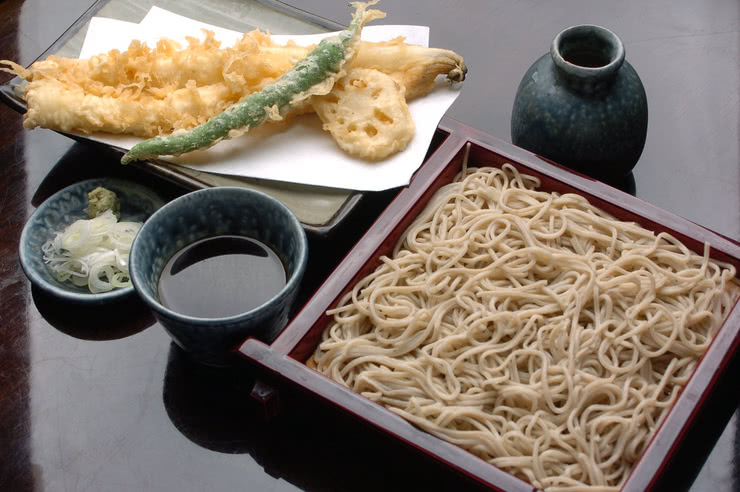
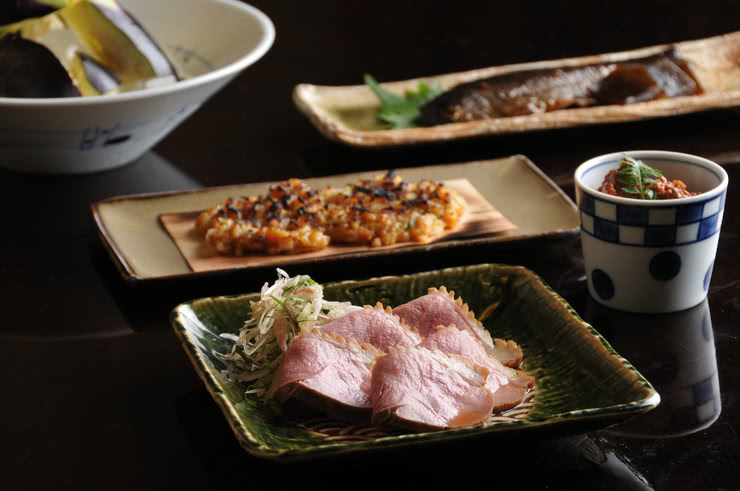
Edo Soba Teuchidokoro Asada
[Saturday] Lunch 11:30 am - 2:30 pm, Dinner 5:30 pm - 9:00 pm (L.O. 8:00 pm)
Closed: Sunday, National Holidays
Average price: [Dinner] 6,000 JPY / [Lunch] 1,300 JPY
Address: 2-29-11, Asakusabashi, Taito-ku, Tokyo Map
More Details
2. Soak in the Downtown Atmosphere of Kanda Matsuya (Awajicho)

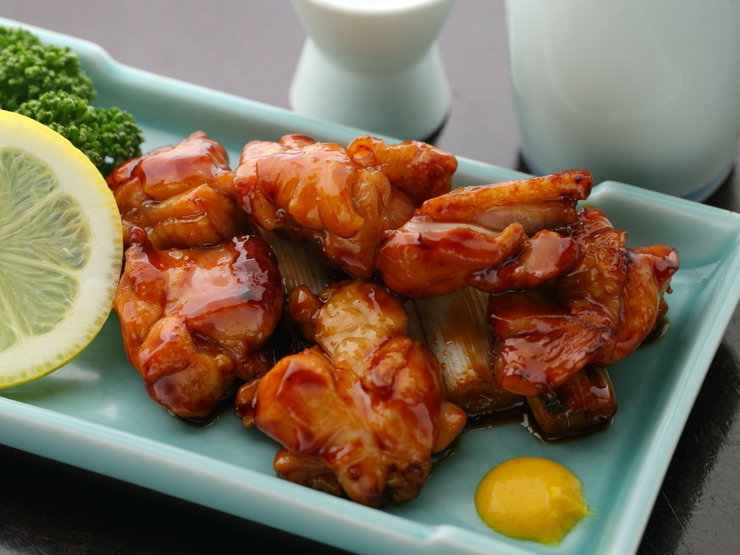
Kanda Matsuya
[Saturday, National Holidays] 11:00 am - 7:00 pm (L.O. 6:45 pm)
Closed: Sunday
Average price: [Dinner] 2,000 JPY / [Lunch] 1,000 JPY
Address: 1-13, Kanda Suda-cho, Chiyoda-ku, Tokyo Map
More Details
3. Suijin-En(Chohu)
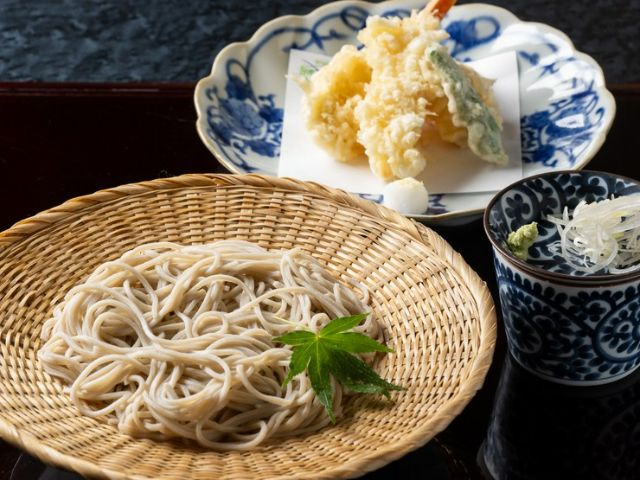
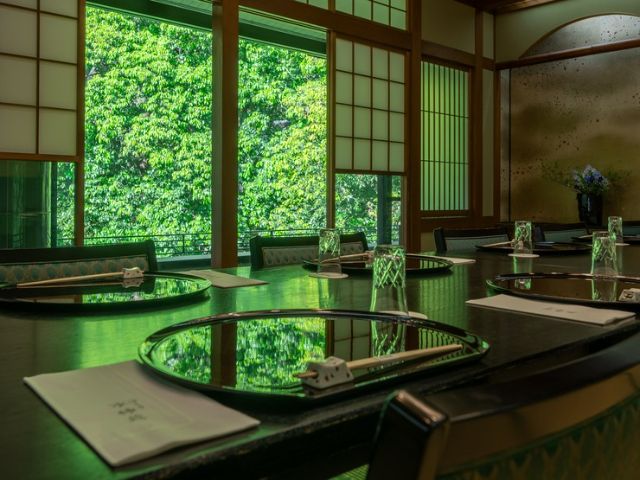
Suijin-En
Closed: Wednesday
Average price: [Dinner] 10,000 JPY / [Lunch] 5,000 JPY
Access: From the north exit of Keio Chofu Station, take the Keio Bus bound for Kichijoji Station or the bus bound for Mitaka Station. It takes 3 minutes to walk from the "Jindaiji Entrance" bus stop.
Address: 5-10-3, Jindaiji Motomachi, Chofu-shi, Tokyo Map
More Details Reservation









![Azabudai Hills [SUMI] (Janu Tokyo) ~ Editor's Afterword by the Editor-in-Chief of Japan's Gourmet Site](https://rimage.savorjapan.com/svj/image/discover_oishii_japan/6536/article_head_150x105z.jpg)









